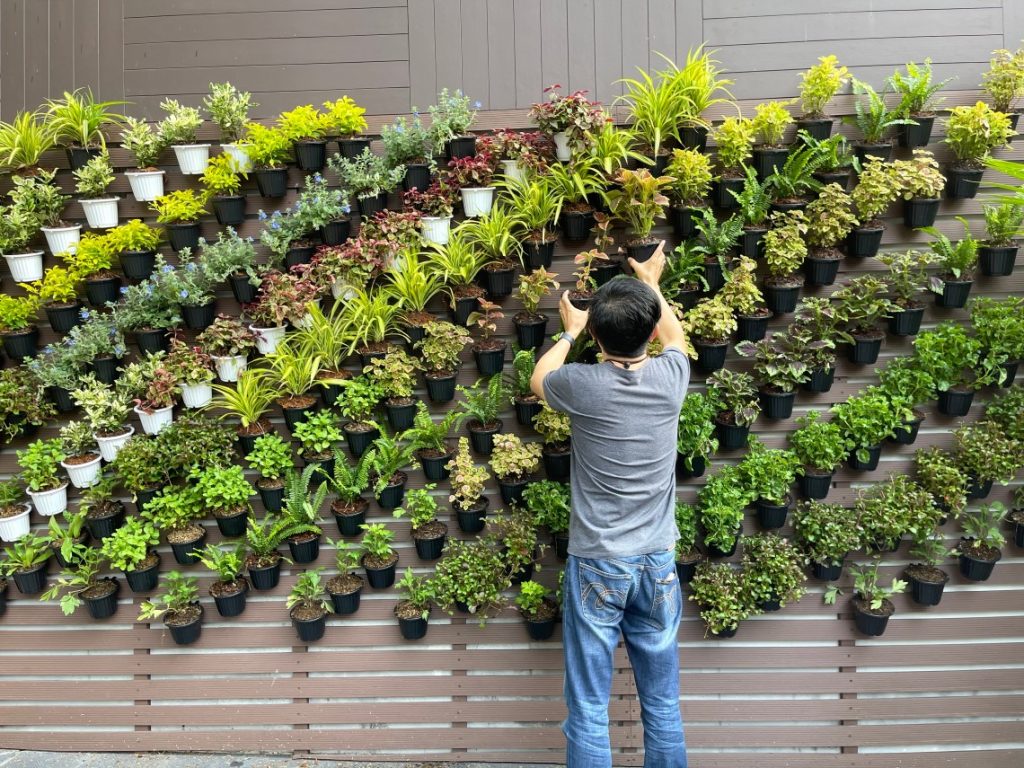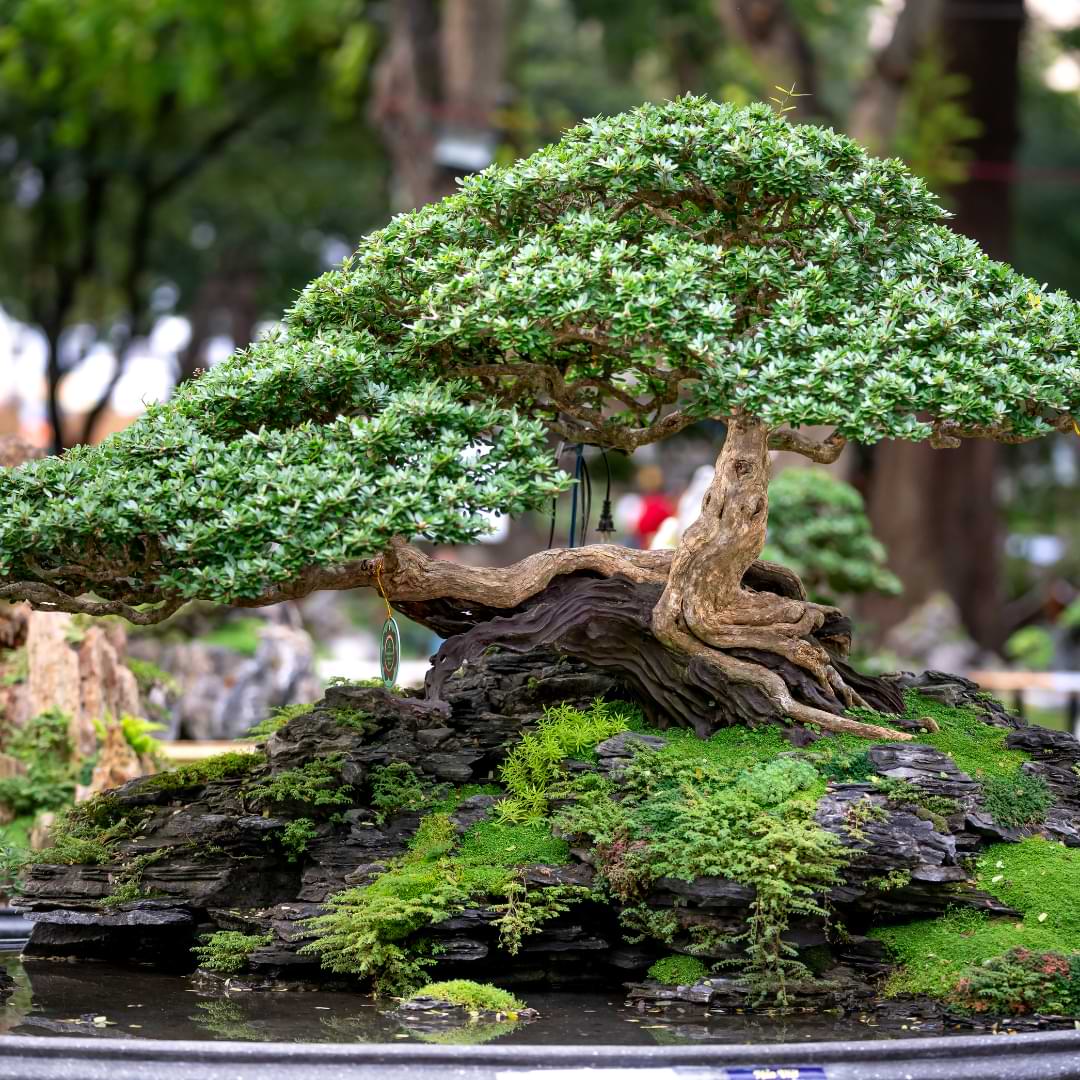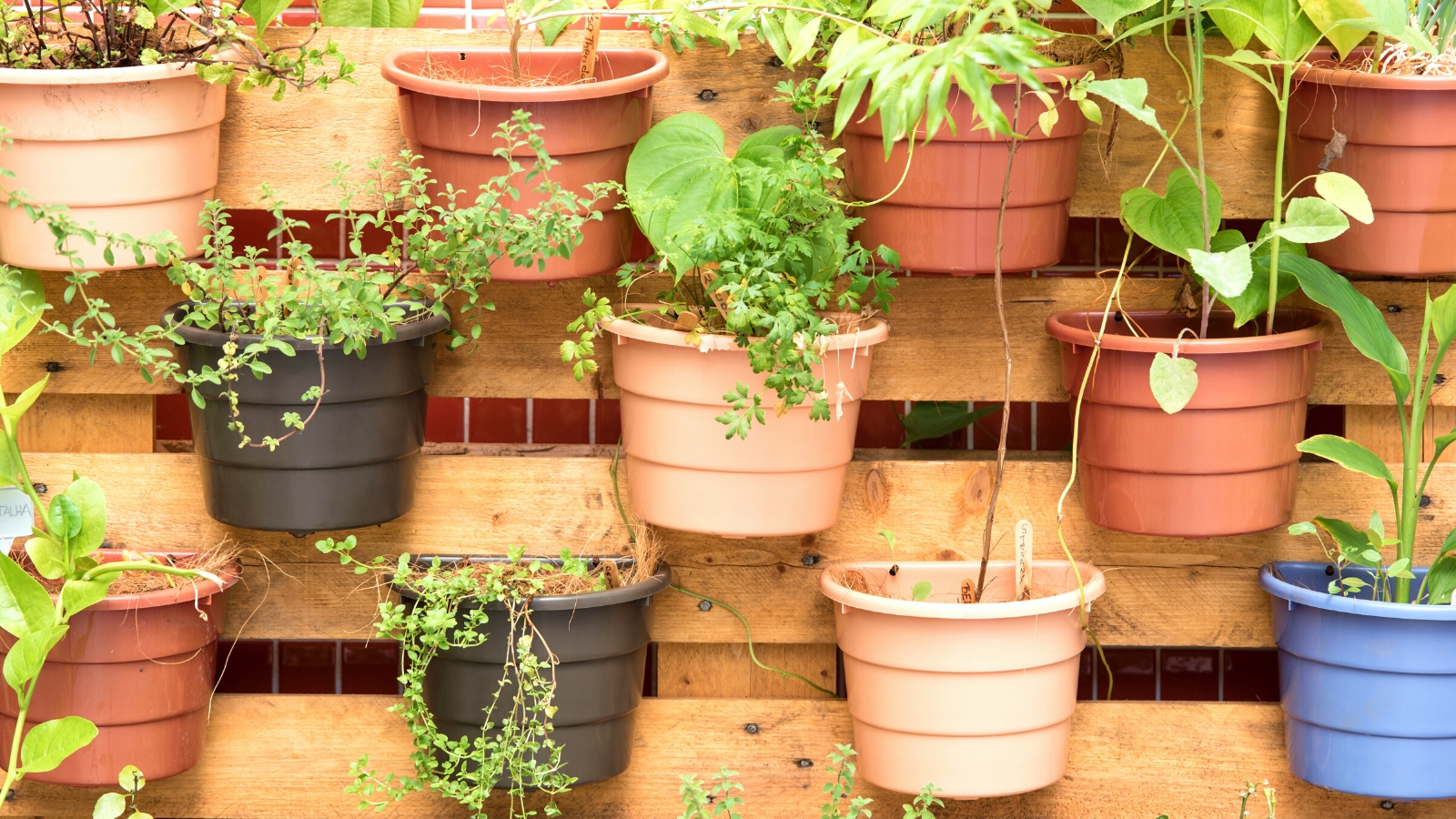Looking to add a touch of green to your small living space? Look no further than vertical gardening! If you’re short on horizontal space or simply love the idea of adding a unique twist to your garden, vertical gardening offers a creative and efficient solution. In this article, we will explore some inspiring ideas for vertical gardening in small spaces, helping you transform your living area into a lush and vibrant oasis. Whether you have a tiny balcony or a cramped urban apartment, these ideas will provide you with practical tips and innovative designs to make the most of your limited space. Get ready to bring the beauty of nature to new heights!
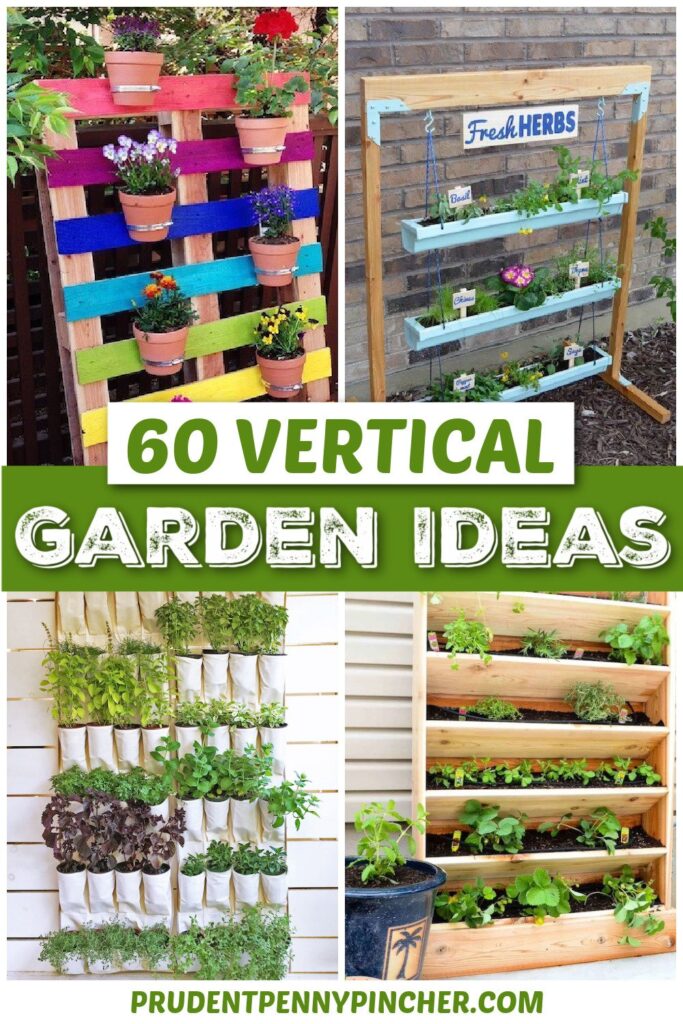
This image is property of www.prudentpennypincher.com.
Choosing the Right Plants
When it comes to choosing plants for your vertical garden, there are a few important factors to consider. First and foremost, you’ll want to determine the compatibility of different plant species. Some plants may have specific needs or preferences that may not work well with others. It’s important to do your research and ensure that you’re selecting plants that will thrive together in your vertical garden.
In addition to compatibility, you’ll also want to consider space-saving plants. Vertical gardens are a great option for those with limited space, so selecting plants that can grow vertically and take up less space horizontally can be a smart choice. Look for plants that have compact growth habits or can be trained to grow upwards, such as climbing vines or plants with trailing foliage.
Light requirements are another crucial factor to consider when choosing plants for your vertical garden. Take note of the amount of sunlight your chosen vertical garden location receives throughout the day, and select plants accordingly. Some plants thrive in full sun, while others prefer more shade. By matching the light requirements of your plants to the conditions in your vertical garden, you’ll set them up for success.
Finally, you’ll want to think about whether you prefer flowering plants or foliage plants in your vertical garden. Flowering plants can add a beautiful burst of color and visual interest, while foliage plants can create a lush and vibrant green backdrop. Consider the overall aesthetic you’re going for and choose plants that will help you achieve that look.
Essential Tools and Materials
Before you begin creating your vertical garden, it’s important to have the right tools and materials on hand. First and foremost, you’ll need to decide on a vertical garden structure. There are several options to choose from, including trellises, frames, and wall-mounted planters. Consider the size and design of your space, as well as your personal preference, to determine which structure will work best for you.
Once you’ve selected a structure, you’ll need supporting frameworks to hold your plants in place. This could include items such as hooks, brackets, or wire mesh. These frameworks are essential for ensuring that your plants stay securely attached to the vertical surface.
Containers and pots are another essential component of your vertical garden. Depending on the size of your plants, you may opt for smaller individual pots or larger containers that can hold multiple plants. Make sure to choose containers with proper drainage to prevent waterlogging and ensure the health of your plants.
Lastly, you’ll need soil and fertilizers to provide your plants with the nutrients they need to thrive. Choosing a high-quality potting mix specifically formulated for container gardens is recommended. Additionally, consider incorporating organic fertilizers or slow-release fertilizers to promote healthy and robust plant growth.

This image is property of www.treehugger.com.
Creating a Vertical Garden Design
Before you start installing your vertical garden, it’s important to take some time to plan and design your space. Begin by assessing the available space you have for your vertical garden. Consider factors such as the size of the area, the amount of sunlight it receives, and any existing structures or obstacles that may impact your design.
Next, think about your aesthetic preferences. Do you have a specific color scheme or style in mind? Are you looking for a more uniform and structured design, or do you prefer a more wild and natural look? By considering these factors, you can ensure that your vertical garden design is a reflection of your personal taste and style.
Once you have a clear idea of what you want your vertical garden to look like, it’s time to plan the layout. Determine where each plant will be placed and how they will interact with one another. Consider factors such as plant height, growth habits, and spacing requirements. This will help ensure that your plants have enough room to grow and thrive in your vertical garden.
Incorporating trellises and climbing plants can add an extra layer of visual interest to your vertical garden design. Trellises can provide a support structure for climbing plants, allowing them to grow vertically and create a stunning effect. Consider incorporating plants such as ivy, clematis, or morning glories that can easily climb and add a touch of natural beauty to your vertical garden.
Installing a Vertical Garden
Once you have your vertical garden design planned out, it’s time to start installing it. The first step is to prepare the vertical surface where your garden will be mounted. Make sure the surface is clean and free of any debris or obstructions. Repair any damage or imperfections to ensure a smooth and secure installation.
When it comes to hanging or mounting options, there are a few different methods to choose from. Some structures may come with their own mounting brackets or hooks, while others may require additional hardware. Follow the manufacturer’s instructions and use the appropriate tools and materials to ensure a safe and secure installation.
Proper spacing is crucial when installing a vertical garden. Make sure to follow the recommended spacing guidelines for each plant, taking into consideration their mature size and growth habits. Overcrowding can lead to competition for resources and hinder the growth and health of your plants.
Proper irrigation and drainage are also important factors to consider when installing your vertical garden. Make sure that your chosen structure allows for proper water flow and drainage. Consider using a drip irrigation system or self-watering containers to ensure that your plants receive the right amount of water without the risk of overwatering.

This image is property of www.bybrittanygoldwyn.com.
Vertical Herb Gardens
Vertical herb gardens are a popular choice for many gardeners, as they offer a convenient way to grow fresh herbs in small spaces. When choosing herbs for your vertical garden, consider varieties that are suitable for vertical growth and thrive in your specific climate and growing conditions.
There are a variety of vertical herb garden structures to choose from, depending on your space and preferences. Options include wall-mounted herb planters, hanging herb baskets, or even repurposed items such as pallets or old ladders. Choose a structure that complements your space and provides adequate room for your herbs to grow.
Proper herb care and maintenance are essential for the success of your vertical herb garden. Regularly trim and harvest your herbs to encourage healthy growth and prevent overcrowding. Pay attention to the specific care requirements of each herb, including sunlight, water, and soil preferences. With proper care, you’ll be able to enjoy a bountiful harvest of homegrown herbs.
Flowering Vertical Gardens
If you’re looking to add a burst of color and visual appeal to your vertical garden, consider incorporating flowering plants. When selecting flowering plants for your vertical garden, choose varieties that are known for their vibrant colors and compact growth habits. Some popular choices include petunias, marigolds, and pansies.
Similar to herb gardens, there are different vertical garden structures available specifically designed for flowers. Wall-mounted flower planters or hanging baskets can create a stunning display of cascading blooms. To enhance the visual appeal of your flowering vertical garden, consider incorporating climbing vines such as morning glories or sweet peas.
Maintaining healthy blooms in your vertical garden involves regular care and maintenance. Deadhead spent flowers to encourage continuous blooming and remove any diseased or damaged plant parts. Pay attention to the specific light and water requirements of your flowering plants to ensure optimal growth and vibrant blooms.
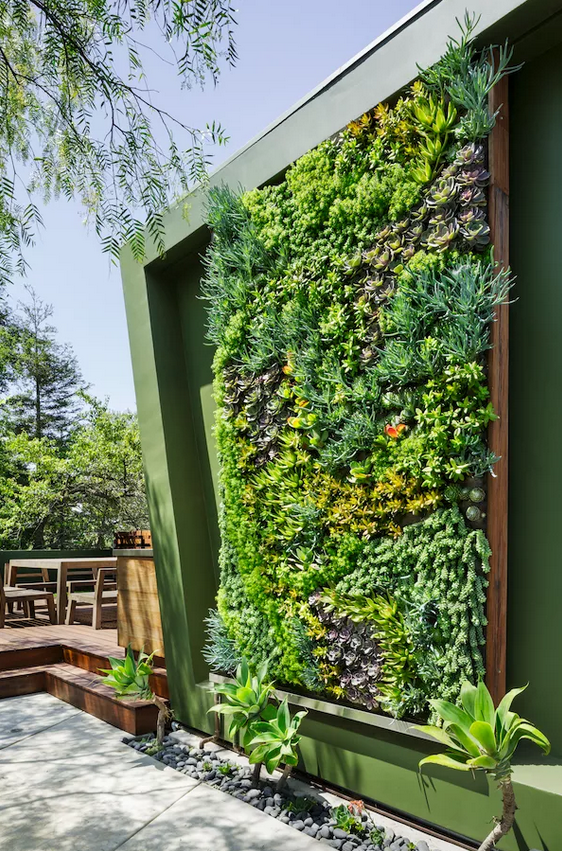
This image is property of naturalbuildingblog.com.
Edible Vertical Gardens
Vertical gardens are not limited to ornamental plants – they can also be a fantastic way to grow your own fresh produce. When choosing edible plants for your vertical garden, consider options that are suited to your climate and growing conditions. Popular choices include salad greens, strawberries, herbs, and vine vegetables like tomatoes or cucumbers.
Hydroponic or aeroponic systems can be a great option for growing edible plants in a vertical garden. These systems allow for soilless cultivation, maximizing space and nutrient efficiency. Consider incorporating vertical garden structures specifically designed for edibles, such as stacked planters or modular systems.
Harvesting and enjoying your homegrown produce is one of the greatest joys of having a vertical edible garden. When harvesting, make sure to pick your crops at the right time for optimal flavor and freshness. Incorporate your homegrown produce into delicious meals, salads, or even homemade cocktails for a farm-to-table experience.
Vertical Gardening Techniques
Vertical gardening encompasses a variety of techniques that can be used to maximize space and create stunning displays. Container gardening is one of the most common and versatile techniques for vertical gardens. It involves planting flowers or vegetables in individual pots or containers and arranging them vertically.
Hydroponics and aeroponics are soilless gardening techniques that can be used in vertical gardens. These systems utilize water or mist to deliver nutrients directly to the plant roots, allowing for efficient and controlled growth. They can be particularly useful for growing edible plants in a vertical setting.
Espalier is a technique that involves training plants to grow along a flat vertical surface, such as a wall or trellis. This technique allows you to create intricate patterns or designs with your plants and can be a unique way to showcase your gardening skills.
Stacked planters are another technique commonly used in vertical gardens. This involves stacking individual planters on top of each other to maximize space. Stacked planters can create a visually striking effect and allow for the growth of multiple plants in a small footprint.
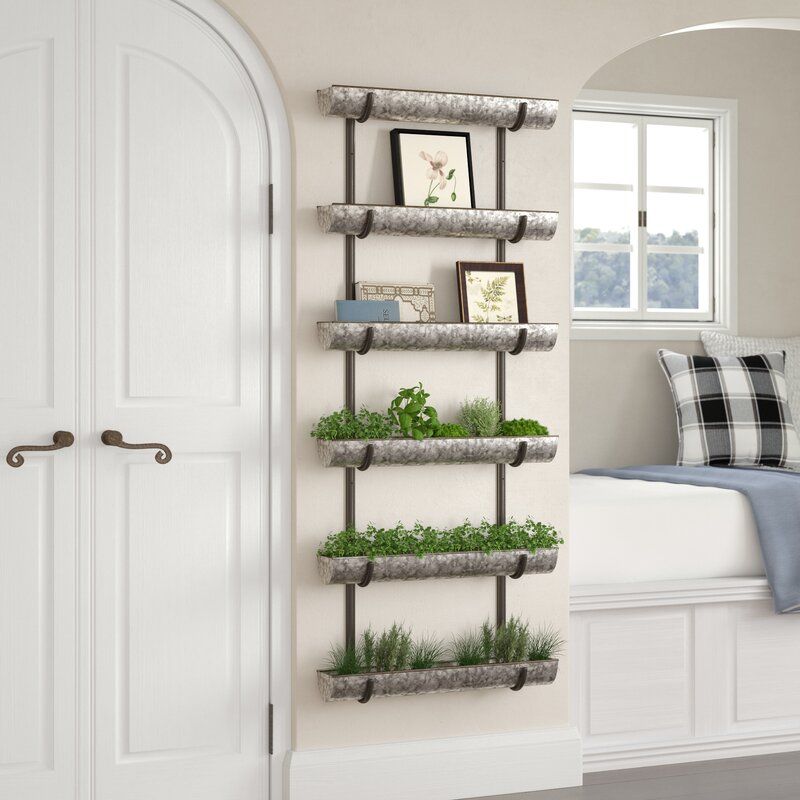
This image is property of hips.hearstapps.com.
Vertical Garden Maintenance
Proper maintenance is essential in keeping your vertical garden healthy and thriving. When it comes to watering your plants, it’s important to strike a balance. Underwatering can lead to wilted and stressed plants, while overwatering can cause root rot and other issues. Make sure to water your vertical garden regularly, taking into consideration the specific water needs of each plant.
Pruning and trimming are also important maintenance tasks for vertical gardens. Regularly trim back any dead or damaged foliage to promote healthy growth and prevent the spread of pests or diseases. Pay attention to the growth habits of your plants and prune them accordingly to maintain their desired shape and form.
Pests can be a common issue in vertical gardens, so it’s important to be vigilant and proactive. Regularly inspect your plants for any signs of pests, such as chewed leaves or webs. If you notice any pests, take appropriate measures to control or eliminate them. This can include using organic pest control methods or introducing beneficial insects to your garden.
Disease prevention is also crucial in maintaining a healthy vertical garden. Keep an eye out for any signs of disease, such as spots or discoloration on leaves, and take immediate action. Proper sanitation practices, such as cleaning your tools and regularly removing dead plant material, can help prevent the spread of diseases.
Troubleshooting Common Issues
Even with proper care and maintenance, sometimes issues can arise in your vertical garden. Lack of sunlight is a common problem, especially in urban environments or shaded areas. If your vertical garden isn’t receiving enough sunlight, consider supplementing with artificial grow lights to ensure that your plants get the light they need.
Poor drainage can also be a challenge in vertical gardens. If you notice that your plants are sitting in water or the soil is constantly damp, it’s a sign of inadequate drainage. To address this issue, make sure your containers have proper drainage holes and consider adding a layer of gravel or perlite to improve drainage.
Plant overcrowding is another issue that can arise in vertical gardens. When plants are too close together, they compete for resources and can become stressed. If you notice overcrowding in your vertical garden, consider removing or transplanting some of the plants to give them more space to grow.
Nutrient deficiencies can also occur in vertical gardens. If you notice that your plants have yellowing leaves or are not growing as vigorously as they should be, it may be a sign of nutrient deficiencies. Consider adding a balanced fertilizer to your vertical garden to ensure that your plants are getting the necessary nutrients for healthy growth.
With careful planning, proper care, and maintenance, you can create a beautiful and thriving vertical garden in even the smallest of spaces. Whether you choose to grow herbs, flowers, or edible plants, the possibilities are endless. So get creative, have fun, and enjoy the beauty and bounty of your vertical garden. Happy gardening!

